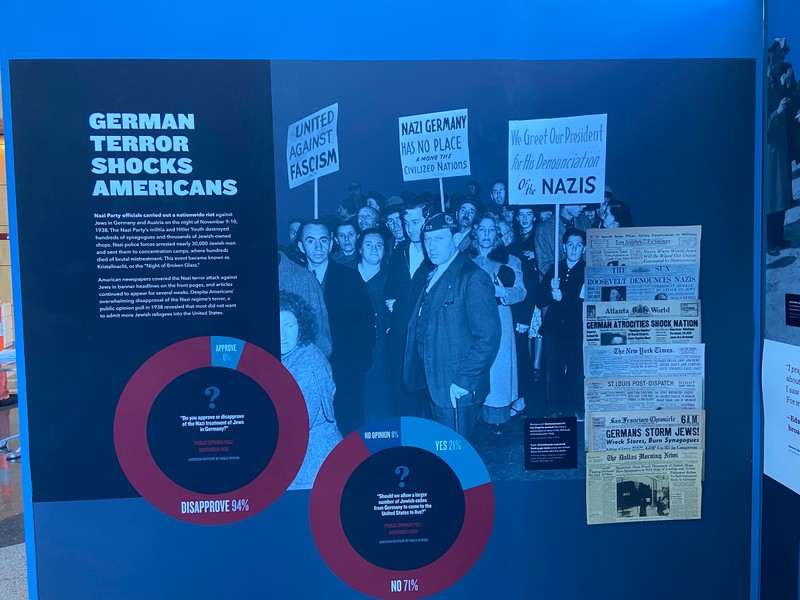German Terror Shocks Americans (Americans and the Holocaust Exhibit)
Introduction
Author-Uploaded Audio
German Terror Shocks Americans (Americans and the Holocaust Exhibit)
Text-to-speech Audio
On the night of November 9th, 1938, Nazi Germany launched a nationwide terror campaign against Jews. Nazi supporters destroyed Jewish-owned shops across Germany and Austria—which had already been annexed by Nazi Germany—and they burned hundreds of synagogues and arrested 30,000 Jewish men and boys and sent them to concentration camps. These were the first mass roundups of Jews--before 1938, most concentration camp prisoners had been political opponents of the Nazis.These attacks, which were soon called Kristallnacht (pronounced Cryst-all-knockt), were front-page news throughout the United States for almost three weeks. You can see some of the headlines here, and this photo of a protest in Los Angeles after the attacks. But more importantly, look at these public opinion polls.
View the poll on the left. How many people said “Disapprove?” View the poll on the right and see the percentage of people who said “No.”
Despite Americans overwhelming disapproval of Nazi terror, most people did not want to admit more Jewish refugees into the United States. This divide between sympathy and action existed throughout this time period.
Images
German Terror Shocks Americans Panel (Americans and the Holocaust)

Backstory and Context
Text-to-speech Audio
Metropolitan Library System is one of 50 U.S. libraries selected to host AMERICANS AND THE HOLOCAUST, a traveling exhibition from the U.S. Holocaust Memorial Museum that examines the motives, pressures, and fears that shaped Americans’ responses to Nazism, war, and genocide in Europe during the 1930s and 1940s.
The Americans and the Holocaust exhibit will be on display at the Dowtown Library, along with a series of related special events from Thursday, January 5 to Sunday, February 12.
Based on extensive new research of that period, Americans and the Holocaust addresses important themes in American history, exploring the many factors — including the Great Depression, isolationism, xenophobia, racism, and antisemitism — that influenced decisions made by the U.S. government, the news media, organizations and individuals as they responded to Nazism. This exhibition will challenge the commonly held assumptions that Americans knew little and did nothing about the Nazi persecution and murder of Jews as the Holocaust unfolded.
Drawing on a remarkable collection of primary sources from the 1930s and ’40s, the exhibition focuses on the stories of individuals and groups of Americans who took action in response to Nazism. It will challenge visitors to consider the responsibilities and obstacles faced by individuals — from Franklin Delano Roosevelt to ordinary Americans — who made difficult choices, sought to effect change, and, in a few cases, took significant risks to help victims of Nazism even as rescue never became a government priority.
Americans and the Holocaust was made possible by the generous support of lead sponsor Jeannie & Jonathan Lavine. Additional major funding was provided by the Bildners — Joan & Allen z”l, Elisa Spungen & Rob, Nancy & Jim; and Jane and Daniel Och. The Museum's exhibitions are also supported by the Lester Robbins and Sheila Johnson Robbins Traveling and Special Exhibitions Fund, established in 1990.
Sources
United States Holocaust Memorial Museum. Accessed January 5th, 2023. https://www.ushmm.org/.
American Library Association. Accessed January 5th, 2023. https://www.ala.org/.
